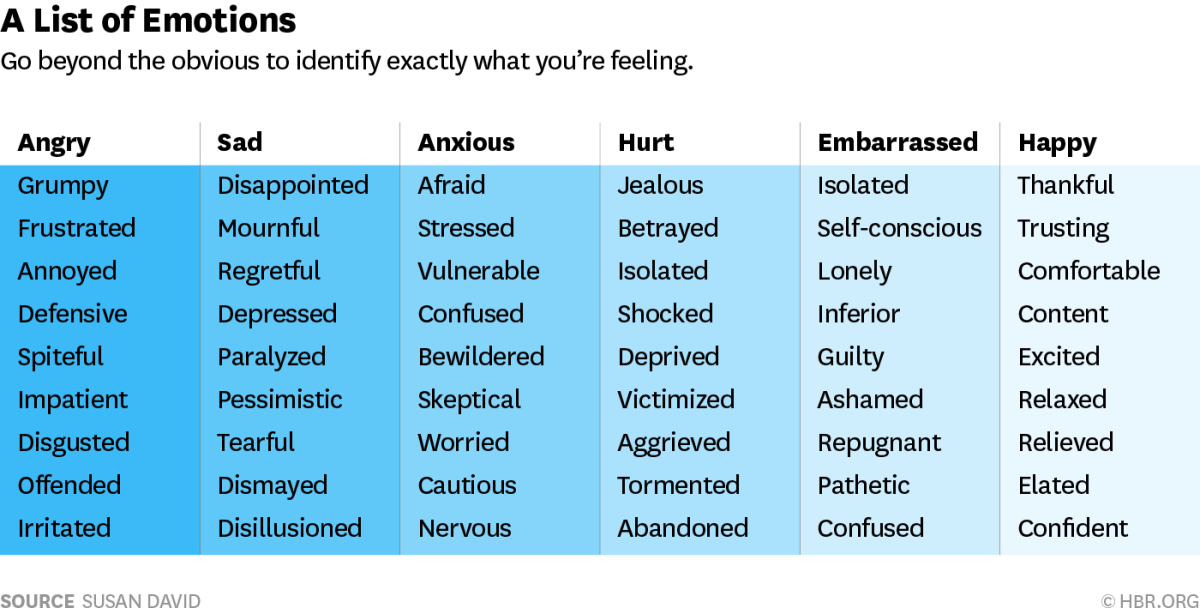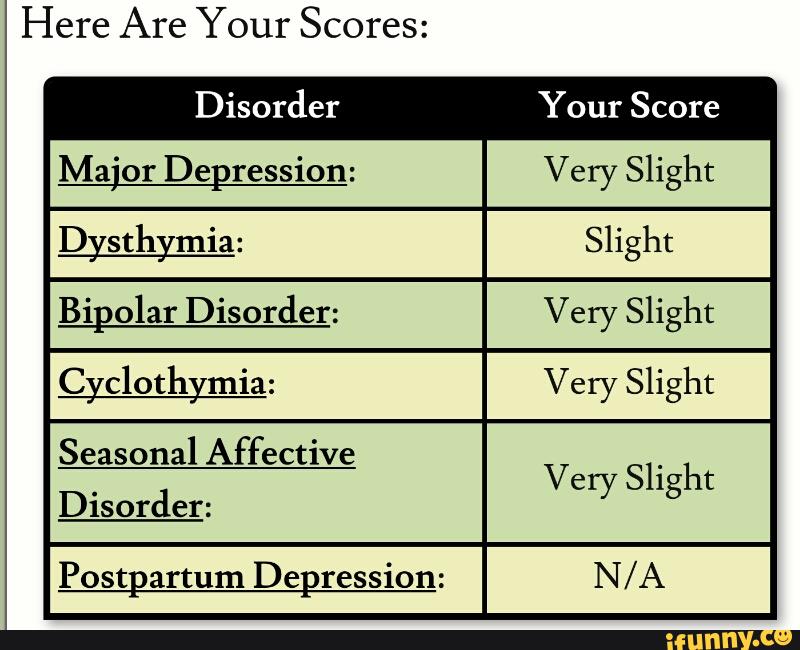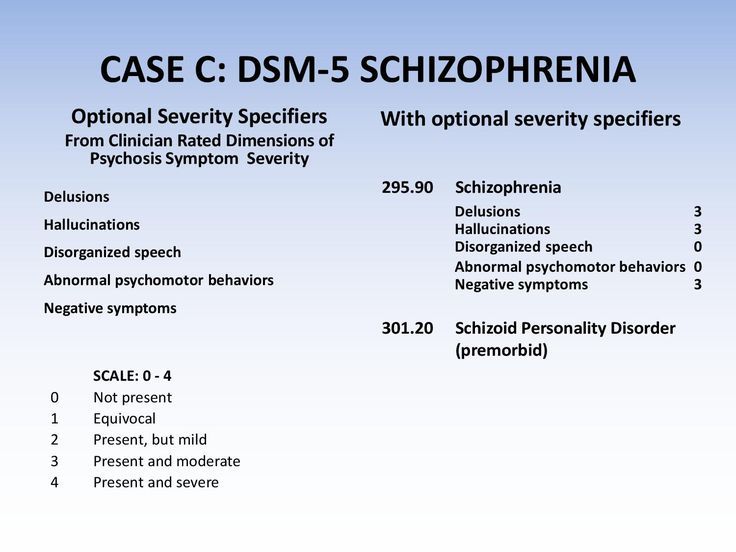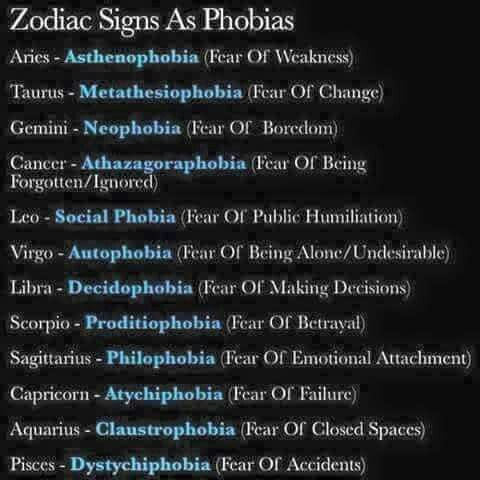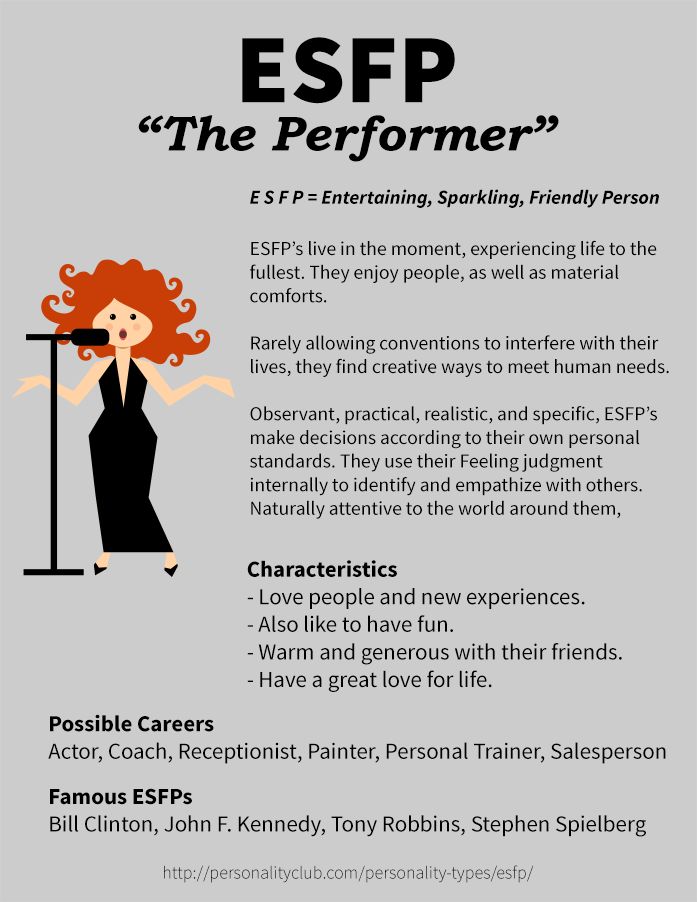Four types of operant conditioning
The Science and Art of Dog Training
When I was an up and coming dog trainer, the psychology of training animals absolutely fascinated me. We are two different species yet we need to communicate on a daily basis! How do we get there if we don’t speak the same language? By touch? By food? There were so many questions and an overwhelming amount of information to be found. I’d spend hours researching and reading theory. In this article, I’ll explain B.F. Skinner’s Operant Conditioning Theory and how it shapes all dog trainers and the philosophies they use to help train you and your dog. Opinions on the use of these methods can be debated intensely, so we’ll save that conversation for a different day.
While Pavlov gets mentioned many times for his classical conditioning experiments, B.F. Skinner is often not give enough credit. Operant conditioning deals with intentional actions that have an effect on the surrounding environment. He believed that the best way to understand a behavior is to look at the causes of an action and its consequences.
In order to take an in depth look, we have to understand the terminology. In Operant Conditioning Theory, there are essentially four quadrants: Positive Reinforcement, Positive Punishment, Negative Reinforcement, and Negative Punishment. What do you think of when you read “Positive” and “Negative”? Good and bad, is the first thing that comes to mind. In this context however that would be incorrect. In Operant Conditioning, “Positive” is considered adding and “Negative” is subtracting or taking away. “Reinforcement” is pretty straight forward and means trying to increase the frequency of a desired behavior. Lastly, “Punishment” is a consequence that is aimed at decreasing the likelihood of a behavior happening again in the future.
Still with me? Good. So let’s break it down even further by mixing and matching our newly learned terminology. We’ll start with the best known example: Positive Reinforcement. Positive Reinforcement is essentially adding something to the equation to encourage the subject to repeat a desired behavior.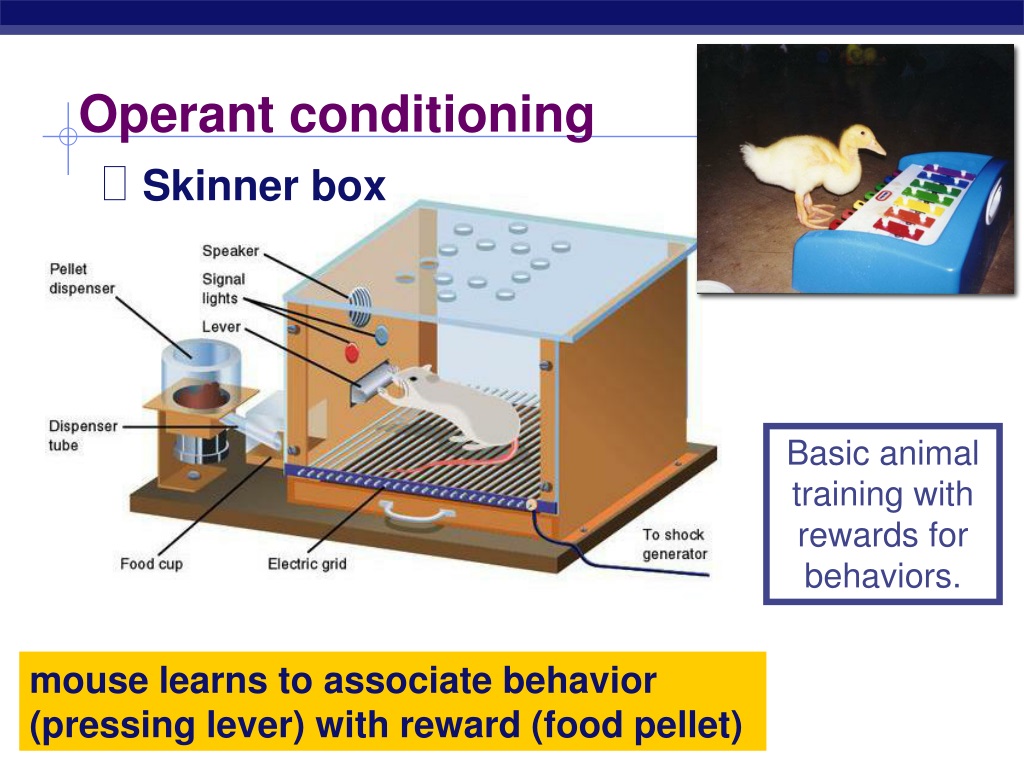 Examples include giving your dog a treat for sitting when asked, rewarding an employee with a bonus for a job well done, giving your child $5 for every A they receive on their report card. Positive Reinforcement in dog training does not necessarily have to be with a food item, but can be given through praise or playing with a favorite toy. Some trainers may not use treats, but this doesn’t mean they don’t utilize something positive to reinforce a behavior.
Examples include giving your dog a treat for sitting when asked, rewarding an employee with a bonus for a job well done, giving your child $5 for every A they receive on their report card. Positive Reinforcement in dog training does not necessarily have to be with a food item, but can be given through praise or playing with a favorite toy. Some trainers may not use treats, but this doesn’t mean they don’t utilize something positive to reinforce a behavior.
The next quadrant is one of the most misunderstood forms of Operant Conditioning, Negative Reinforcement. The first three websites that appear when Googling the term are teeming with misinformation. Many people consider correcting a dog to be negative reinforcement, but that is not the case. If we circle back to our terminologies, Negative means taking away or removing something, it does not mean that you correct the dog using a negative or aversive stimuli. This is the most difficult quadrant to understand and to put into practical terms.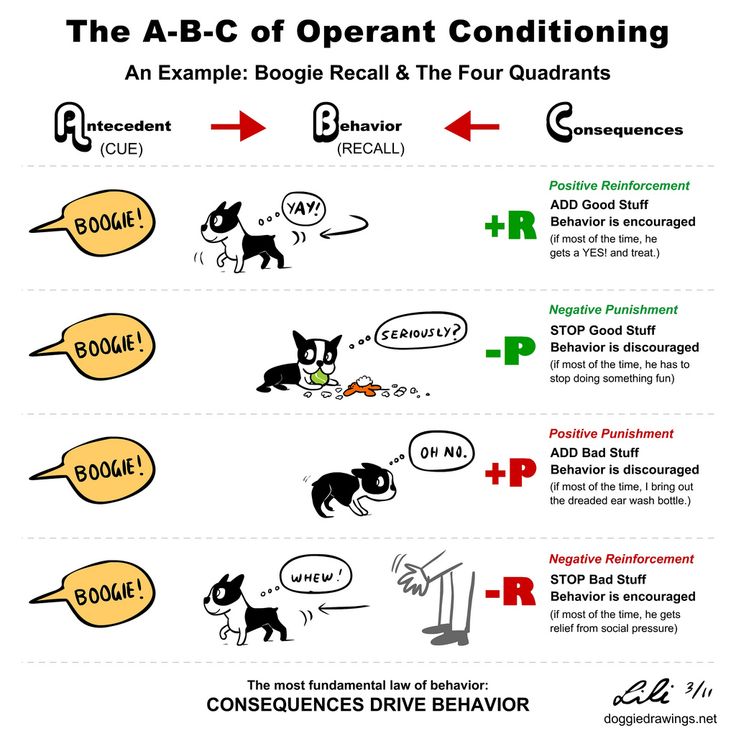 The best example that comes to mind involves a common household dynamic, the nagging spouse. When wanting something to get done around the house the spouse will constantly bring up that they want it done. Once the task is completed the nagging is removed. At the end of the day, Negative Reinforcement is one of the hardest to quantify in dog training and is the rarest quadrant used.
The best example that comes to mind involves a common household dynamic, the nagging spouse. When wanting something to get done around the house the spouse will constantly bring up that they want it done. Once the task is completed the nagging is removed. At the end of the day, Negative Reinforcement is one of the hardest to quantify in dog training and is the rarest quadrant used.
Positive Punishment is often confused with Negative Reinforcement. Positive Punishment involves adding a stimuli to a stop an unwanted behavior. There are many ways to go about this and most dog owners use this more than they realize! A great example is telling your dog “No” or “Stop” when he/she is barking. You’re adding verbage to stop an unwanted behavior. Positive punishment is often used on daily walks. When a dog pulls, handlers often have the tendency to tug or correct them back on leash. The handler is adding a correction (Positive) that will decrease the frequency of the behavior (Punishment).
By now, explaining and understanding Negative Punishment should be a breeze. We take away something to get a behavior to stop. Your teenager comes home late so you take the car away (Negative) to stop them from coming home late next time (Punishment). In terms of dog training, if your dog growls at another dog over a toy, you take that toy away (Negative) to get him/her to stop growling (Punishment). The list of examples can go on and on!
While there’s plenty of science to dog training, the art is knowing when to apply each quadrant depending on the dog’s specific personality. If your dog is skittish and shy around people or other dogs, a trainer may elect to lay off Positive Punishment and use more Positive and Negative Reinforcement to coax it out of its shell. Some trainers may find Positive Punishment more effective when teaching a dog to Heel then having to constantly rely on treats and Positive Reinforcement the entire walk. Judgement is key and no matter what techniques you use to train your dog, almost all of B.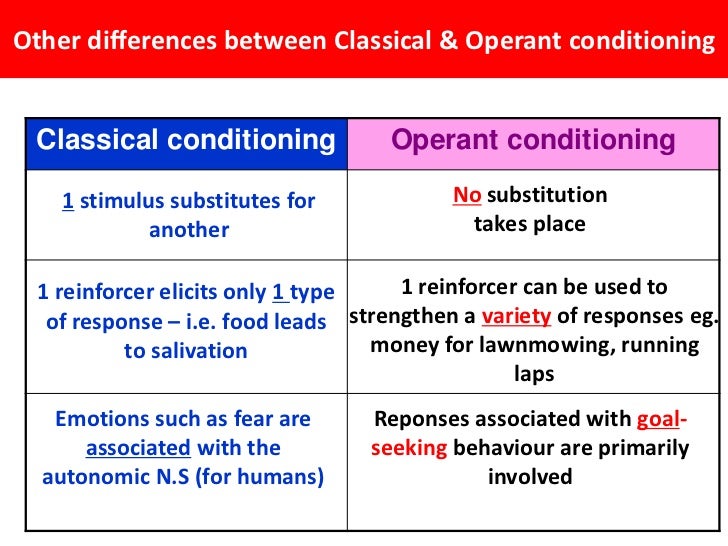 F. Skinner’s quadrants are in play at some time or another.
F. Skinner’s quadrants are in play at some time or another.
|
Explanations > Conditioning > Types of Operant Conditioning Positive reinforcement | Negative reinforcement | Punishment | Extinction | So what?
There are four types of operant conditioning by which behavior may be changed. The following table summarizes these and the paragraphs beyond explain further.
Positive reinforcementPositive reinforcement occurs when a behavior is strengthened as a result of
receiving a positive condition. Do X ==> Y happens ==> Feel good ==> Do X more ExampleA person lifts a finger. The dog eventually sits. The dog gets fed. In time, even beginning to lift a finger leads to the dog sitting. A child screams. Its parents pay it lots of attention, which is pleasant. The child screams more often. Negative reinforcementNegative reinforcement happens when a behavior is strengthened as a result of stopping or avoiding a negative condition. The basic structure is as follows: Z happens ==> Feel bad ==> Do X ==> Z happens less ==> Feel better ==> When Z happens, Do X ExampleA dog is thirsty and goes outside where it finds a bowl of water. Whenever it is thirsty in future, it goes outside. A person goes out in winter and gets cold. They put on a coat and no longer feel
warm. Next time they put on a coat when it seems cold. PunishmentPunishment works when a behavior is weakened as a result of experiencing a negative condition. The basic structure is as follows: Do X ==> Z happens ==> Feel bad ==> Do X less ExampleA cow grazes an electric fence. It feels discomfort. It learns not to go near the fence. A child hits a sibling. It is made to stand in a corner. It hits siblings less in the future. ExtinctionExtinction occurs when a behavior is weakened as a result of not experiencing an expected positive condition or a negative condition is stopped. Y expected ==> Anticipate feeling good ==> Do X ==> Y does not happen ==> Feel bad ==> Do X less Z happens ==> Feel bad ==> Do X ==> Z does not happen ==> Feel better ==> Do X less ExampleA dog sniffs around, looking for food and finds none in the outhouse. A child screams and is ignored. They scream less in the future. See alsoExtinction |
Skinner's operant conditioning as a personality formation technology
The 20th century was rich in scientific discoveries in the field of psychology. Different directions and approaches to the study of man tried in every possible way to answer the question of what humanity is. In the wake of the fascination with positivism and the search for precise methods of research, behaviorism was considered the most popular psychological concept for a long time, which implied the idea that a person is always a creation of surrounding circumstances, and completely excluded the importance of consciousness and internal characteristics of the individual.
It was in the spirit of behaviorism that the theory of operant conditioning was formulated by the American psychologist Burres Skinner, who argued that human behavior is determined and therefore predictable.
In this article, we will take a closer look at Skinner's most outstanding concept, which has been repeatedly criticized for manipulating human behavior, but at the same time, its proponents fruitfully used it to introduce new character traits.
Skinner and the critique of traditional psychology
Burres Frederick Skinner (1904-1990) is one of the most famous representatives of behaviorism, the founder of neobehaviorism, and also a very controversial figure in the history of American psychology of the twentieth century.
Before becoming a prominent psychologist, Skinner dreamed of a career as a writer, but after becoming acquainted with the scientific works of Pavlov and John Watson, he entered Harvard and began to study psychology.
While still a student of psychology at the university, Skinner, following Pavlov, argued that man is no different from other animals, and therefore it is worth analyzing him in the same scientific categories as other living organisms.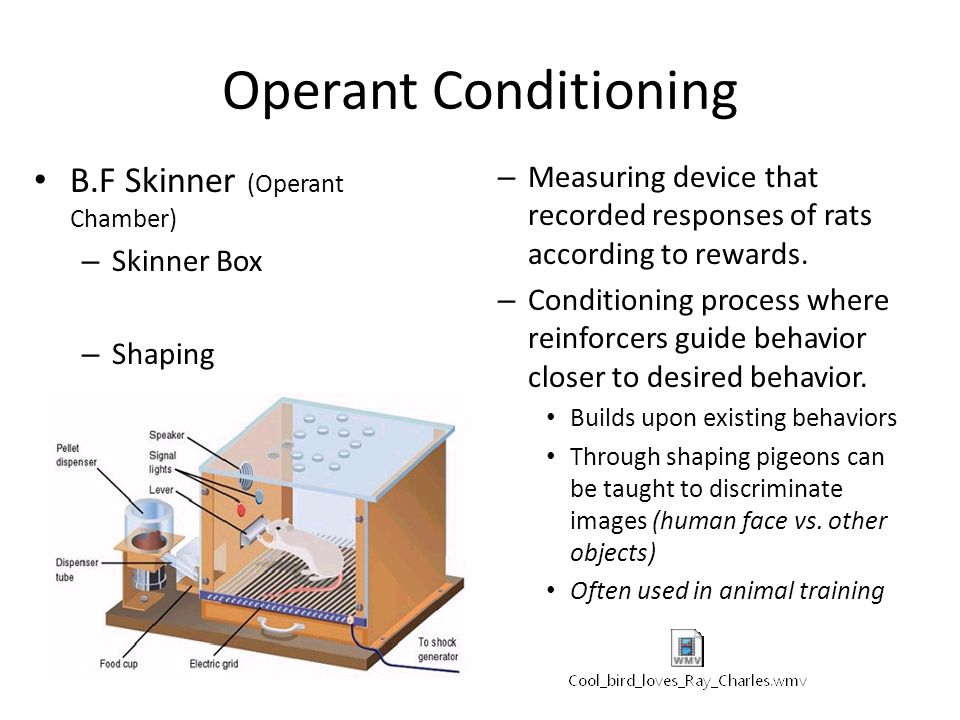 With this famous opinion, he rebelled against the well-known concept in psychology, according to which the formation of a person and his actions is a reflection of internal experiences, thoughts, emotions.
With this famous opinion, he rebelled against the well-known concept in psychology, according to which the formation of a person and his actions is a reflection of internal experiences, thoughts, emotions.
With these statements about the subject of psychology, Skinner sharply criticized Freud's then popular psychoanalysis, and, following the positivist spirit in the exact and natural sciences, he wanted to rethink the methodology of psychology. Dividing psychology into "pre-scientific" concepts and behaviorists, Skinner tried to reform it and formulate his own scientific method, to create a new experimental psychology.
Criticizing psychology, Skinner tried to prove: the fundamental mistake of modern psychology is that the causes of human behavior are not inside the person, but in the environment. He argued that although humanity has ceased to believe in medieval spirits and demons, it is still trying to describe some kind of metaphorical "hidden forces" of consciousness that cannot be proven or confirmed experimentally. These arguments against the study of the inner world were justified by the fact that people do not have access to the human mind, so psychology should only be concerned with observation.
These arguments against the study of the inner world were justified by the fact that people do not have access to the human mind, so psychology should only be concerned with observation.
Thanks to his numerical experiments in the laboratory (many of which he performed on pigeons and rats), as well as his talent as a writer, Skinner is today considered the most prominent representative of behaviorism. His scientific contribution to the development of psychology had a strong impact on subsequent generations of psychologists who worked in the same direction.
Prerequisites for operant behavior
In Skinner's psychology, the main emphasis is on the fact that a person makes his choice under the influence of some events in the past. Skinner argued that environmental factors lead us to certain decisions and actions. The central source of our behavior is not the people themselves (their feelings, minds, plans, or goals), but their response to environmental influences.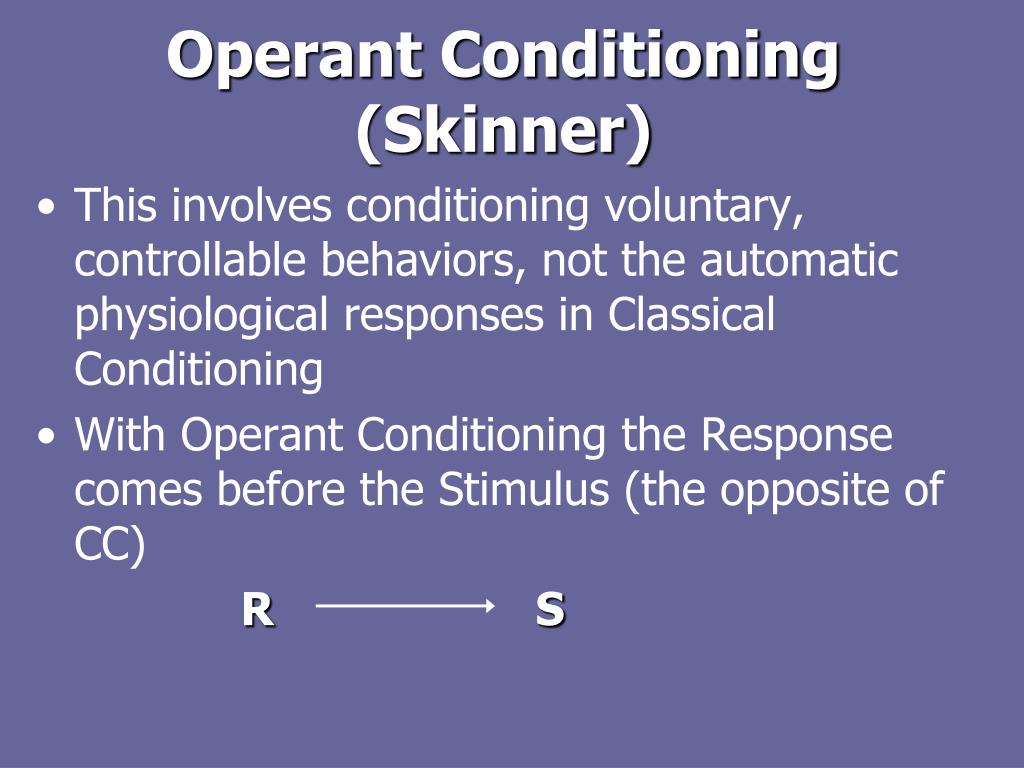 To understand why we do things the way we do, according to Skinner, we need to know the circumstances that motivate us to act.
To understand why we do things the way we do, according to Skinner, we need to know the circumstances that motivate us to act.
This is why the world around us shapes who we are: our actions depend on knowing what is good and what is bad, and although we believe that this is our internal decision, it is the external environment that has shaped our understanding of what is good , and what is bad. People are the result of the adaptation of each person to the environment in which he was born.
According to Skinner's philosophy, there is no need to spend so much energy on the moral development of the individual, because "character traits" are the accumulation of reactions to certain external conditions of the environment. Therefore, the result will be much better if we devote more effort and attention to the study of the external environment and the conditions on which the individual depends. Thus, if we create better environments, we will get better individuals.
In experimental psychology, it is customary to single out two processes responsible for the development and consolidation of forms of response to any needs:
- training - emphasis is placed on the form of training of the teacher;
- learning, learning - learning conditions are important here, which include three different ways of influencing the organism (human or animal): reactive behavior, cognitive learning and operant behavior (or learning as a result of operant conditioning).
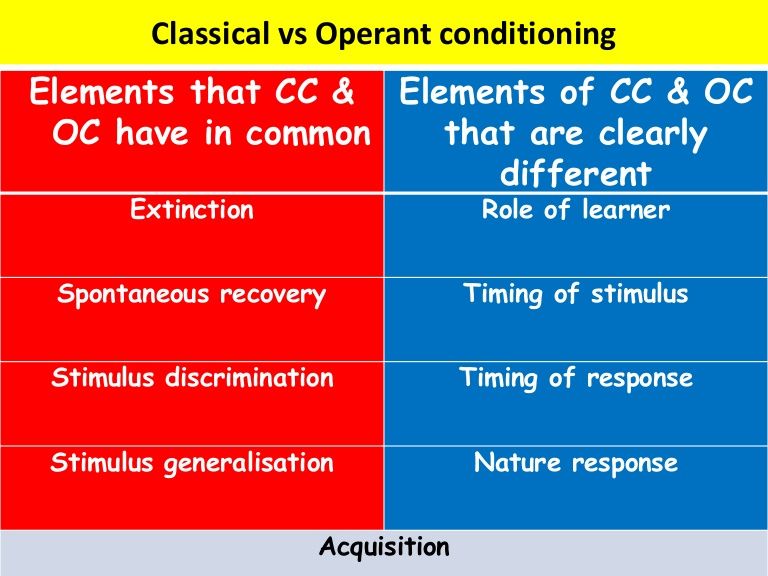
Today, the theory of operant behavior is perhaps Skinner's most famous contribution to the development of experimental psychology. Skinner argued that humans are nothing more than thinking machines that can change their actions.
The theory of operant behavior
According to the theory of behavioral psychology of behaviorism, the external environment is the most important factor in the formation of skills, and the associative connections that the body creates as a result of life experience play a key role.
If Pavlov deduced the formation of conditioned reflexes, Skinner went even further: he described his scientific observations and possible ways of influencing the behavior of the organism, and called them "operant conditioning" (or operant behaviorism) - the process of forming associations between behavior and its consequences . According to Skinner, there are three types of human behavior:
- unconditioned reflex;
- conditioned reflex;
- operant.
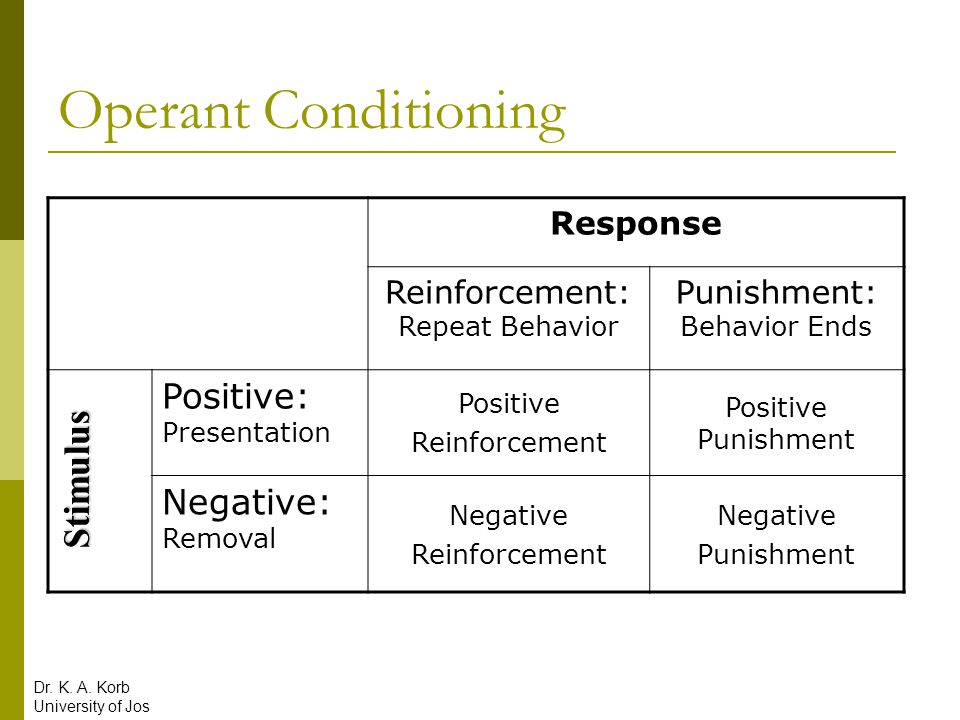
It is the idea of operant conditioning that consists in studying the formation of human behavior. At first, it was formulated by analogy with observing the reaction of animals in the laboratory. Therefore, "conditioning" is the creation of the necessary conditions that make it possible to control human behavior.
Condition is a deliberate step-by-step process that allows you to create the desired controlled conditions, due to the impact of which the state of a person changes, his behavior and reactions to subsequent circumstances. "Operant" (from the word "operation") means an action that has an impact on the environment. Therefore, by operant conditioning Skinner meant a form of learning in which spontaneous behavior is perceived as desirable. Skinner's main emphasis in operant conditioning was not on a person's reactions, but on actions - an action that affects a person.
Therefore, the principle of operant conditioning can be denoted by the fact that human behavior is controlled by its consequences: positive repeated experience in the past forms a model of reaction to a similar situation in the future.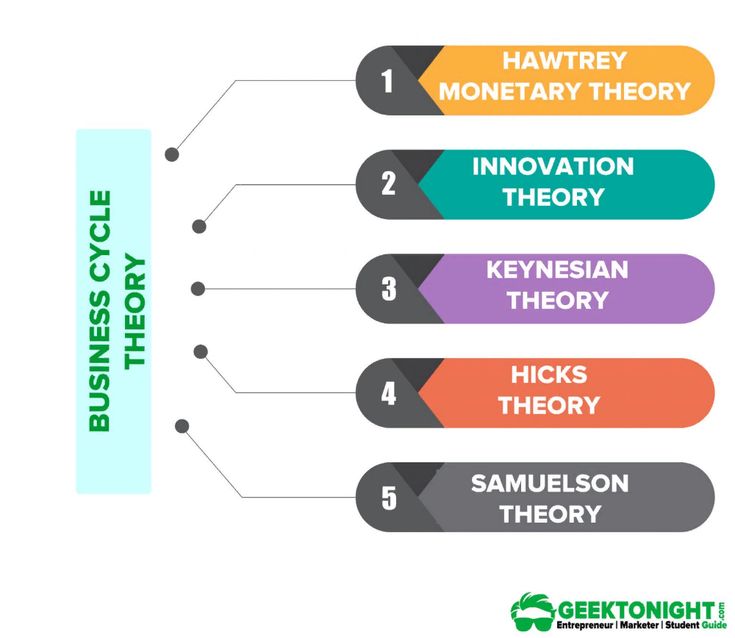
As an example of the operation of operant conditioning, we can imagine the following situation:
Julian went to the cinema with her daughter Ann. Julian bought a bag of different lollipops. He handed the packet to Ann, who went through them all until she found a blue one, which she immediately pulled out and stuffed into her mouth. One explanation for her choice is that, as a result of past experience, she identified the blue color of the candy with a pleasant taste.
Developing his interpretation of what psychology should be, Skinner tried to prove that human behavior always depends on the external environment: choosing a movie, opening the door in response to a call, holding a partner's hand when he asks - all these are examples of operant behavior .
At one time, Skinner substantiated the laws that he called the law of operant conditioning and the law of subjective assessment of the probability of consequences. With this statement, Skinner offered his solution to modern social problems, the creation of a behavior technology that would allow manipulating people's negative behavior and help create positive reactions.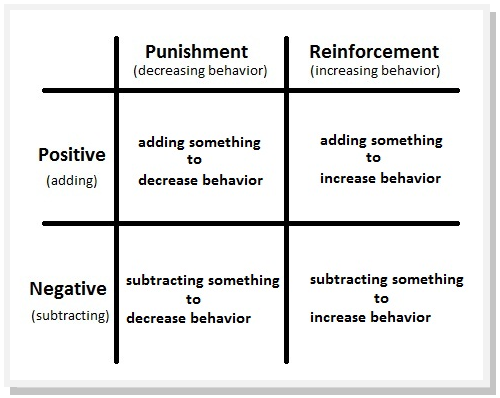 He proposed to change such traits as pride, the desire for power, aggression, to fill people with a clear understanding of meaning and goals.
He proposed to change such traits as pride, the desire for power, aggression, to fill people with a clear understanding of meaning and goals.
Today, operant conditioning is considered by psychologists in two main forms :
- Instrumental learning - it tends to reinforce random behavior through rewards and punishments. The impact on a person occurs due to the activation of nervous activity.
- Creative learning - aimed at influencing the mind and activating creative abilities in the right direction.
Effective operant conditioning rules:
- Simple instructions.
- Easy start.
- Positive learning process.
- Regular reinforcement system.
- Clear methodicalness of the learning process.
One of the key ideas in Skinner's concept is reinforcement or "successive induction of the desired response." He described four modes of reinforcement depending on the required form of response:
- with a constant ratio;
- with constant interval;
- with variable ratio;
- with variable spacing.
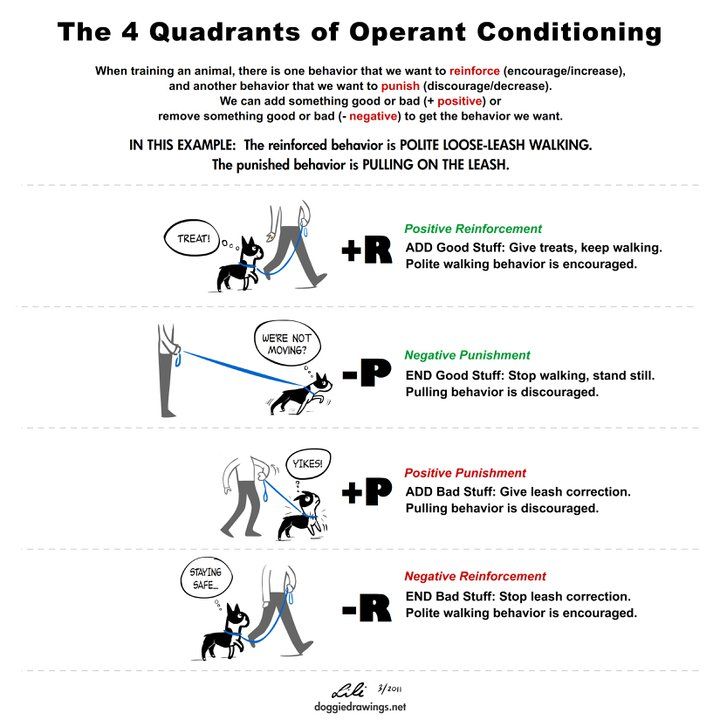
Skinner considered the use of reinforcing stimuli to be of particular importance in the formation of the desired response, which he divided into three types:
- Primary reinforcers - water, food, sex, etc.
- Secondary (conditional) reinforcers - affection, attention, money, praise, etc. - having a strong influence on human behavior;
- Positive and negative reinforcements (aversive) and punishments.
Also in operant conditioning there are three types of learning :
- trial and error method;
- automated response generation;
- imitation by observing and reproducing the desired model of behavior (there are two forms - pure imitation and vicarious, that is, repetition with understanding).
Thus, during operant learning, a person acts on the external environment, and, getting the desired result, increases the likelihood of repeated behavior. And also vice versa: if during the exposure the result was negative, the person will tend to avoid such an experience.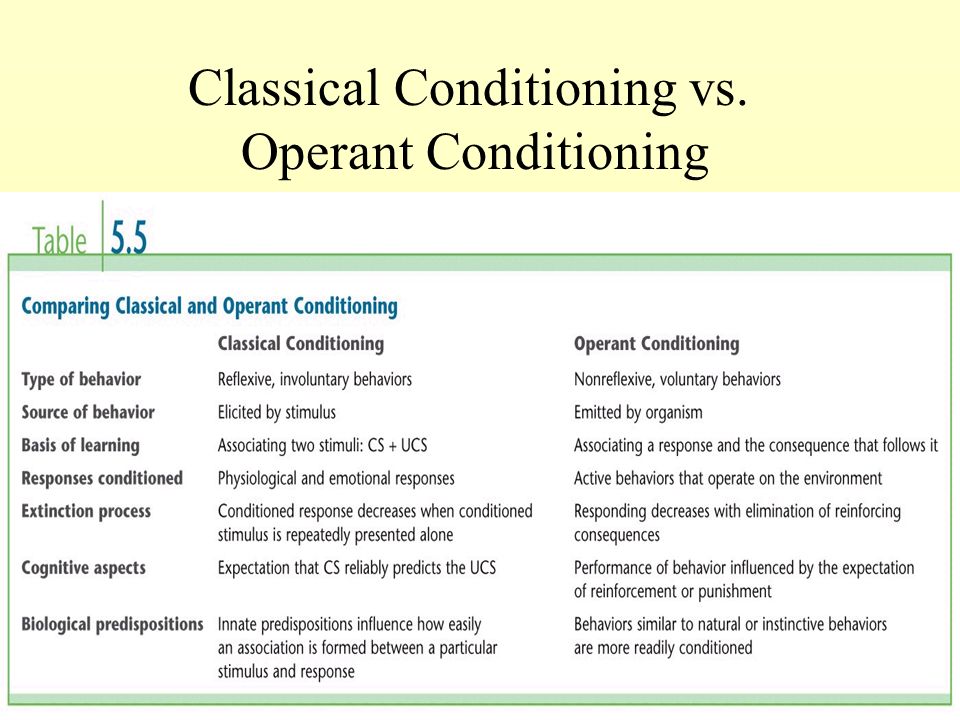
Criticism of Skinner and his scientific contribution to the development of psychology
Despite the wide approval of Skinner's scientific contribution by behaviorists, many well-known psychologists disagreed with his position - Erich Fromm, Noam Chomsky, Steven Pinker. They criticized Skinner for neglecting human feelings, cognition, and the role of human drives. Therefore, Skinner's "psychology" for Fromm, for example, was the science of manipulating human behavior.
However, despite sharp criticism, Skinner's scientific results also brought a lot of fruit. It's not in vain at 19In 1972, the American Psychological Association named Skinner one of the most prominent psychologists of the 20th century. His ideas and observations have been proven time and time again in various fields of application, with the most successful areas being communication skills training, confidence training, self-control, and the treatment of anxiety, migraine, hypertension, and muscle tension.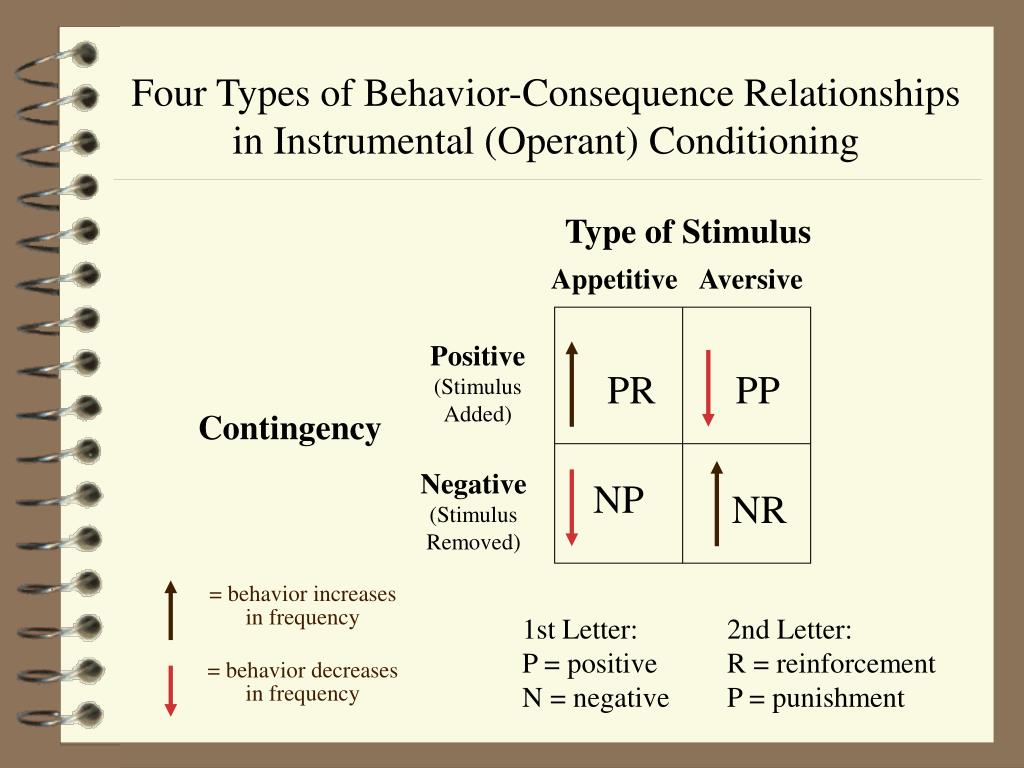
By the way, about the formation of good habits. If you want to understand how you can effectively manage stress, anxiety and fears, take a look at our online Mental Self-Regulation Program. With its help, in 6 weeks you can learn effective ways to maintain clarity of mind and cope with difficult situations at work, at university and in personal relationships.
As for Skinner's operant conditioning, it can be treated differently, and this is a personal choice of each. But still, I want to believe that a person is not just an animal material, guided only by reactions, but a conscious being, able to always and everywhere rely on reason, make informed decisions and act in the best possible way.
We wish you success and look forward to our lessons!
Key words:1 Psychoregulation
Operant conditioning theory
May 1, 2011
The theory of operant conditioning is associated with the names of Edward Lee Thorndike and B.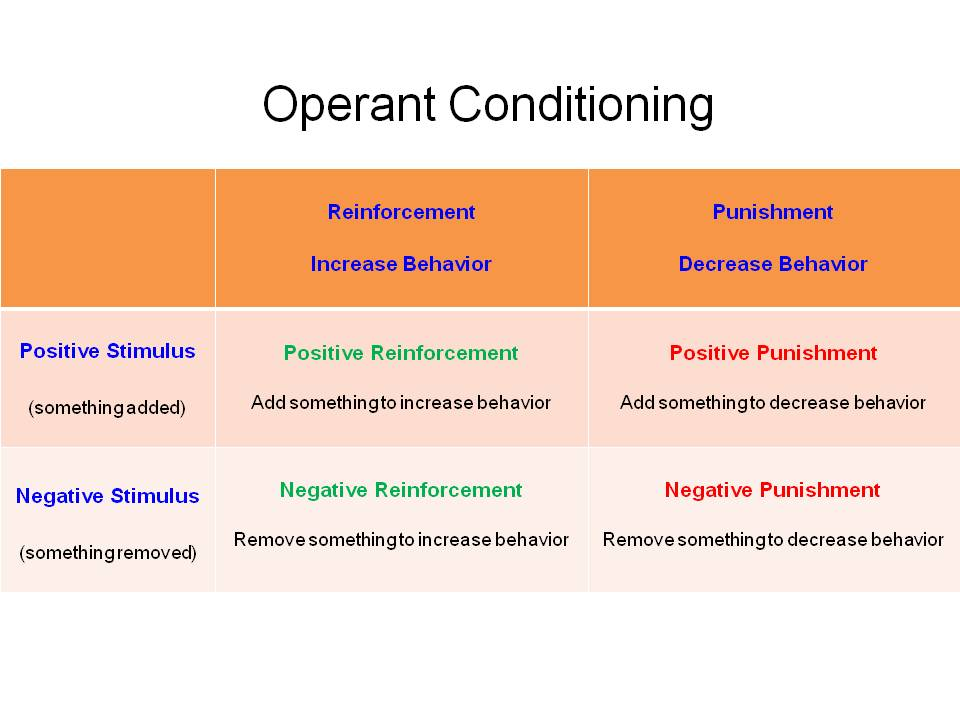 F. Skinner. In contrast to the principle of classical conditioning (S->R), they developed the principle of operant conditioning (R->S), according to which behavior is controlled by its results and consequences. The main way to influence behavior, based on this formula, is to influence its results.
F. Skinner. In contrast to the principle of classical conditioning (S->R), they developed the principle of operant conditioning (R->S), according to which behavior is controlled by its results and consequences. The main way to influence behavior, based on this formula, is to influence its results.
As mentioned earlier, respondent behavior is a version of B.F. Skinner's concept of behavior, which he called Type S conditioning, to emphasize the importance of the stimulus that comes before the response and brings it out. However, Skinner believed that, in general, animal and human behavior cannot be explained in terms of classical conditioning. Skinner emphasized behavior unrelated to any known stimuli. He argued that your behavior is mainly affected by stimulus events that come after it, namely, its consequences. Since this type of behavior involves the organism actively influencing the environment in order to change events in some way, Skinner defined it as operant behavior. He also called it Y-type conditioning to emphasize the impact of the reaction on future behavior.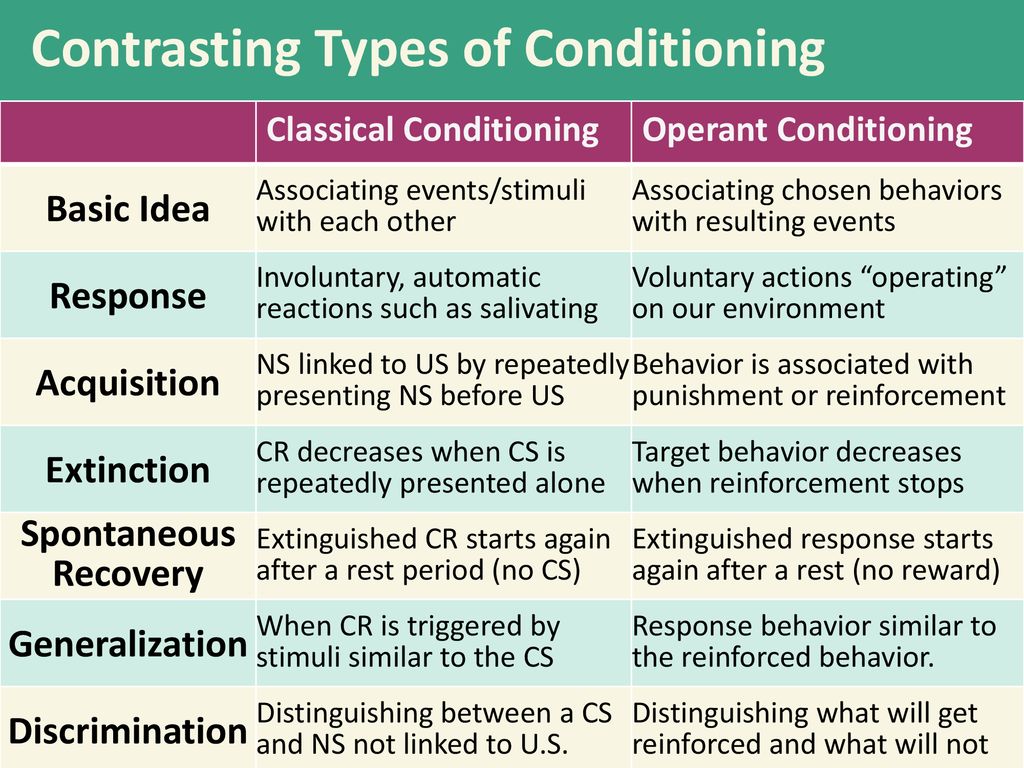
So, the key structural unit of the behaviorist approach in general and the Skinner approach in particular is reaction. Reactions can range from simple reflex responses (eg, salivation to food, flinching to a loud sound) to complex behavioral patterns (eg, solving a math problem, covert forms of aggression).
A response is an external, observable piece of behavior that can be associated with environmental events. The essence of the learning process is the establishment of connections (associations) of reactions with the events of the external environment.
In his approach to learning, Skinner distinguished between responses that are elicited by well-defined stimuli (such as the blink reflex in response to a breath of air) and responses that cannot be associated with any stimulus. These reactions of the second type are generated by the organism itself and are called operants. Skinner believed that environmental stimuli do not force the organism to behave in a certain way and do not induce it to act.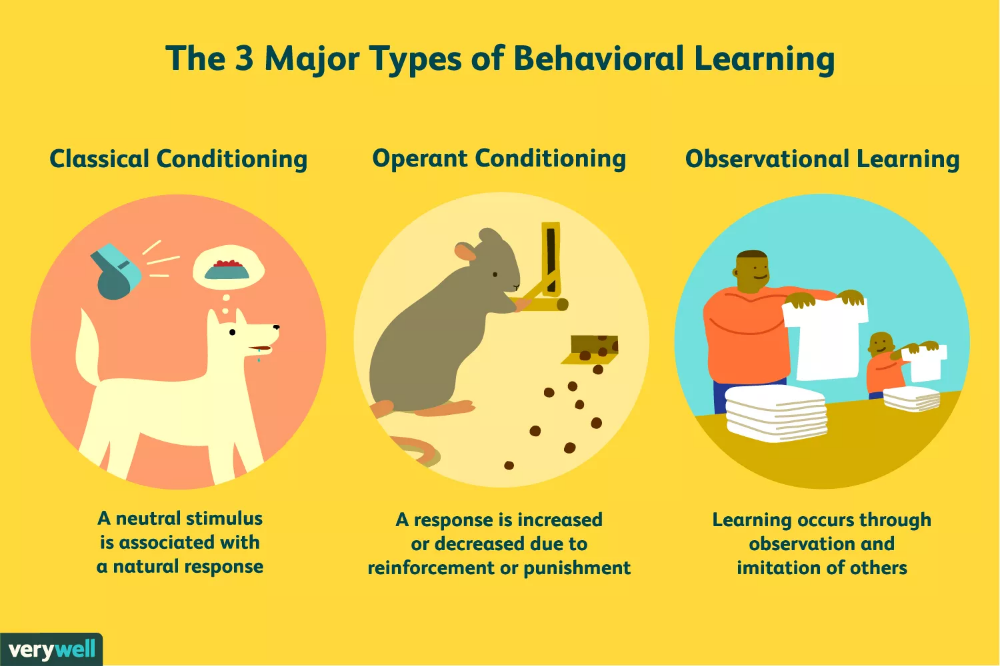 The original cause of behavior is in the organism itself.
The original cause of behavior is in the organism itself.
Operant behavior (caused by operant learning) is determined by the events that follow the response. That is, behavior is followed by an effect, and the nature of that effect changes the organism's tendency to repeat that behavior in the future. For example, skateboarding, playing the piano, throwing darts, and writing one's own name are patterns of operant response, or operants controlled by the outcomes that follow the corresponding behavior. These are voluntary learned responses for which there is no recognizable stimulus. Skinner understood that it is meaningless to talk about the origin of operant behavior, since we do not know the stimulus or internal cause responsible for its occurrence. It happens spontaneously.
If the consequences are favorable for the organism, then the probability of repeating the operant in the future increases. When this happens, the consequences are said to be reinforced, and the operant responses resulting from the reinforcement (in the sense of the high probability of its occurrence) are conditioned.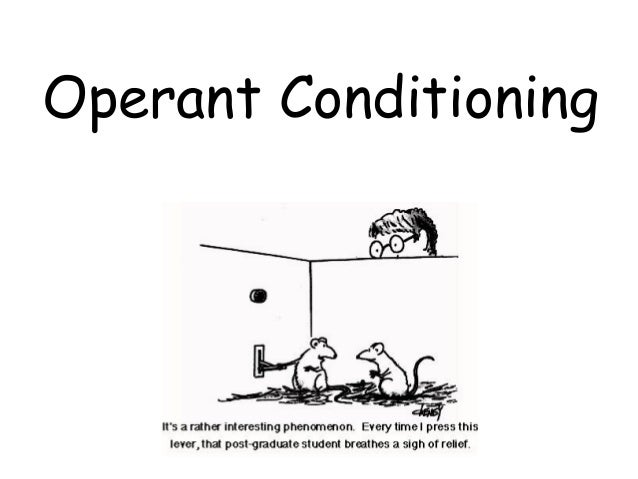 The strength of a positive reinforcer is thus determined according to its effect on the subsequent frequency of responses that immediately preceded it.
The strength of a positive reinforcer is thus determined according to its effect on the subsequent frequency of responses that immediately preceded it.
Conversely, if the consequences of the reaction are not favorable and not reinforced, then the probability of getting the operant decreases. Skinner believed that, therefore, operant behavior is controlled by negative consequences. By definition, negative or aversive consequences weaken the behavior that generates them and increase the behavior that eliminates them.
Operant learning can be thought of as a learning process based on a stimulus-reaction-reinforcement connection, within which behavior is formed and maintained due to one or another of its consequences.
An example of operant behavior is a situation that occurs in almost every family where there are small children, namely, the operant learning of crying behavior. As soon as young children are in pain, they cry, and the immediate reaction of parents is to pay attention and give other positive reinforcements.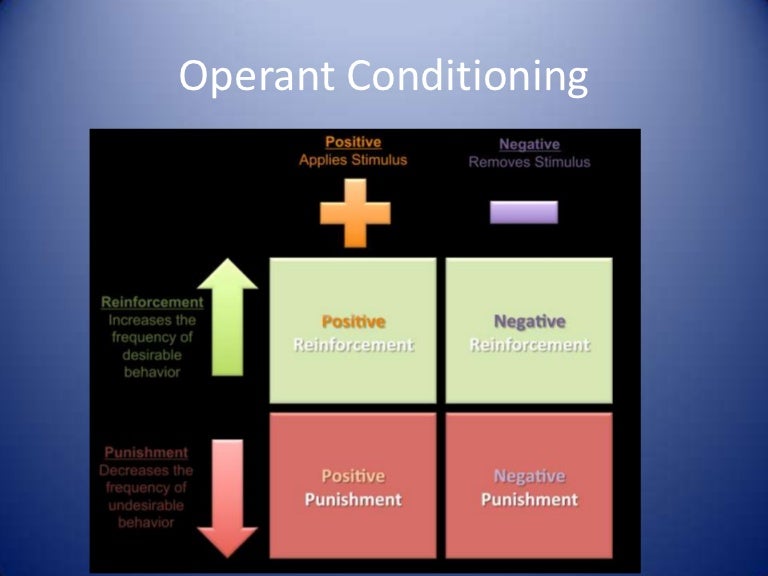
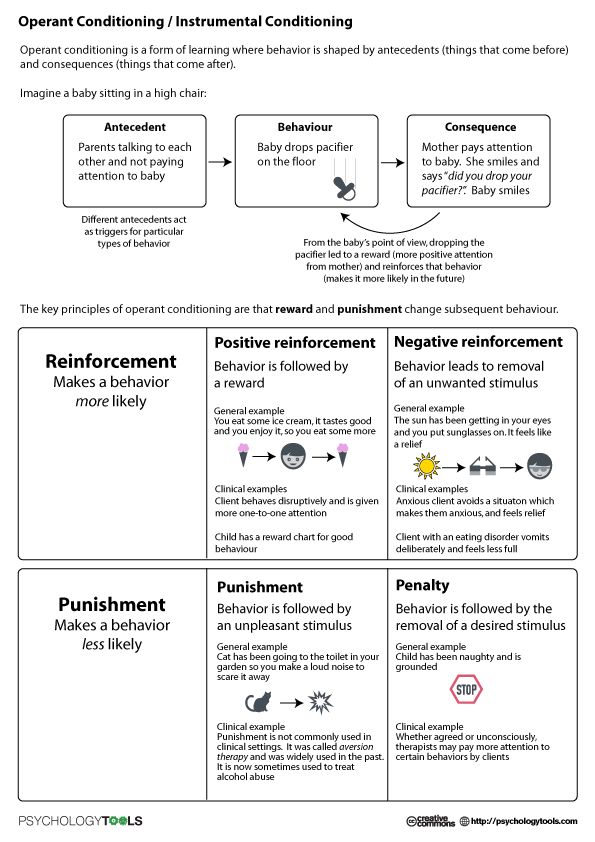 The basic structure is as follows:
The basic structure is as follows: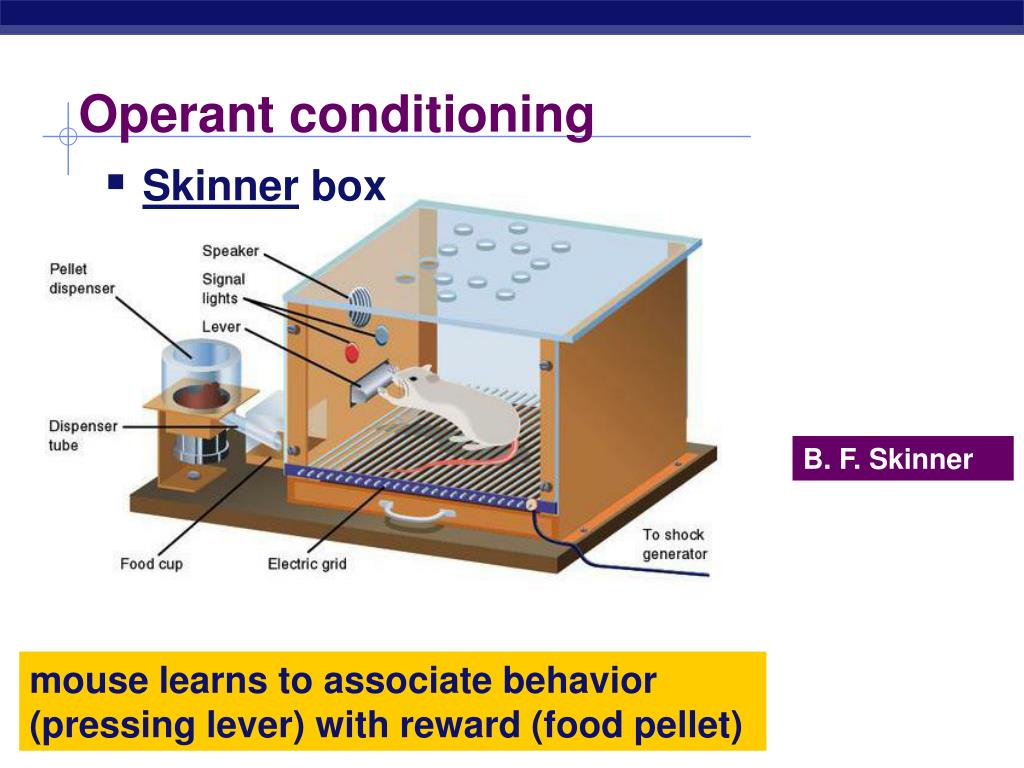
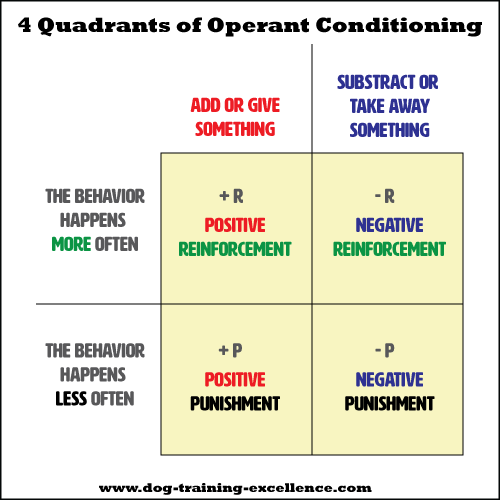 It does
not look for food in the outhouse next time.
It does
not look for food in the outhouse next time.